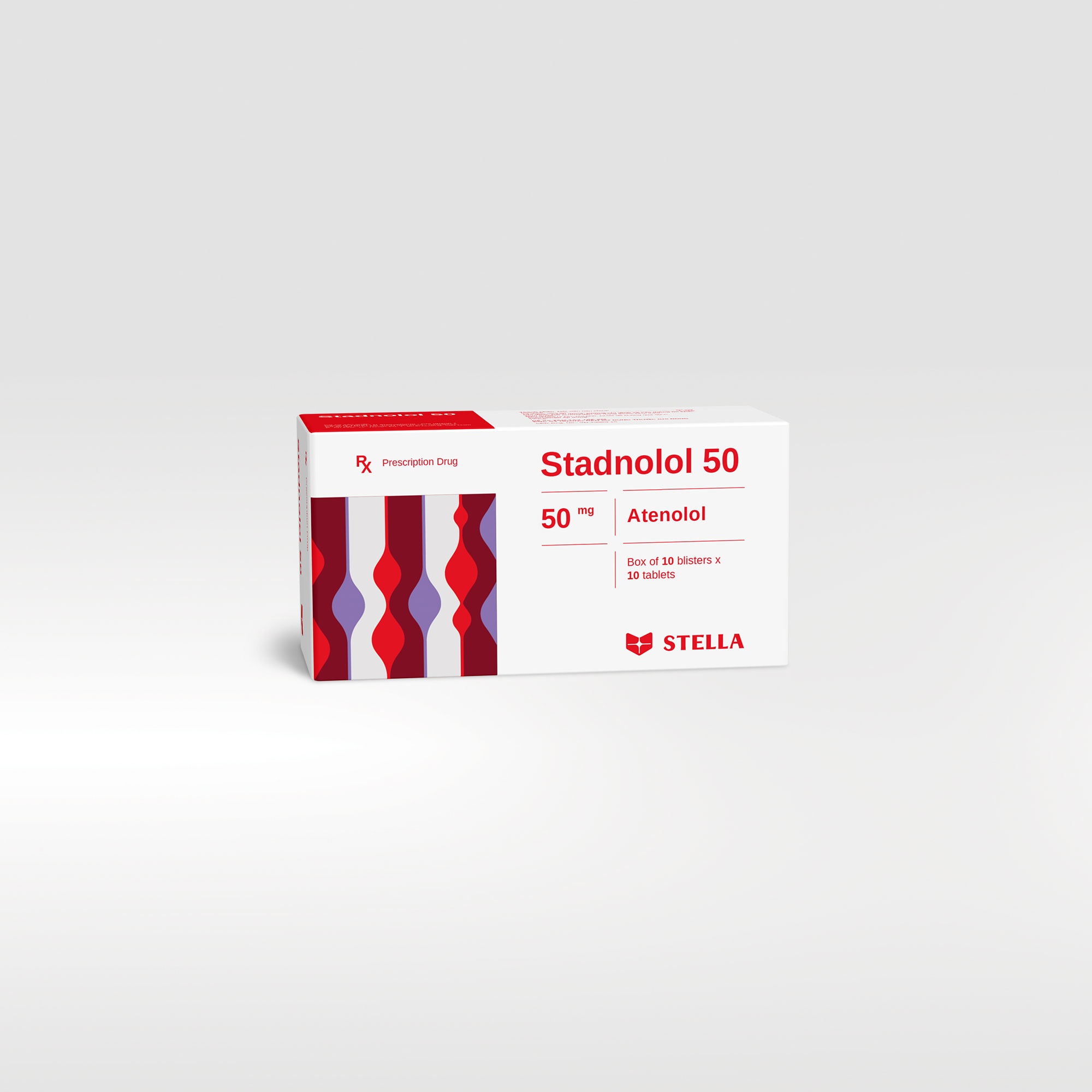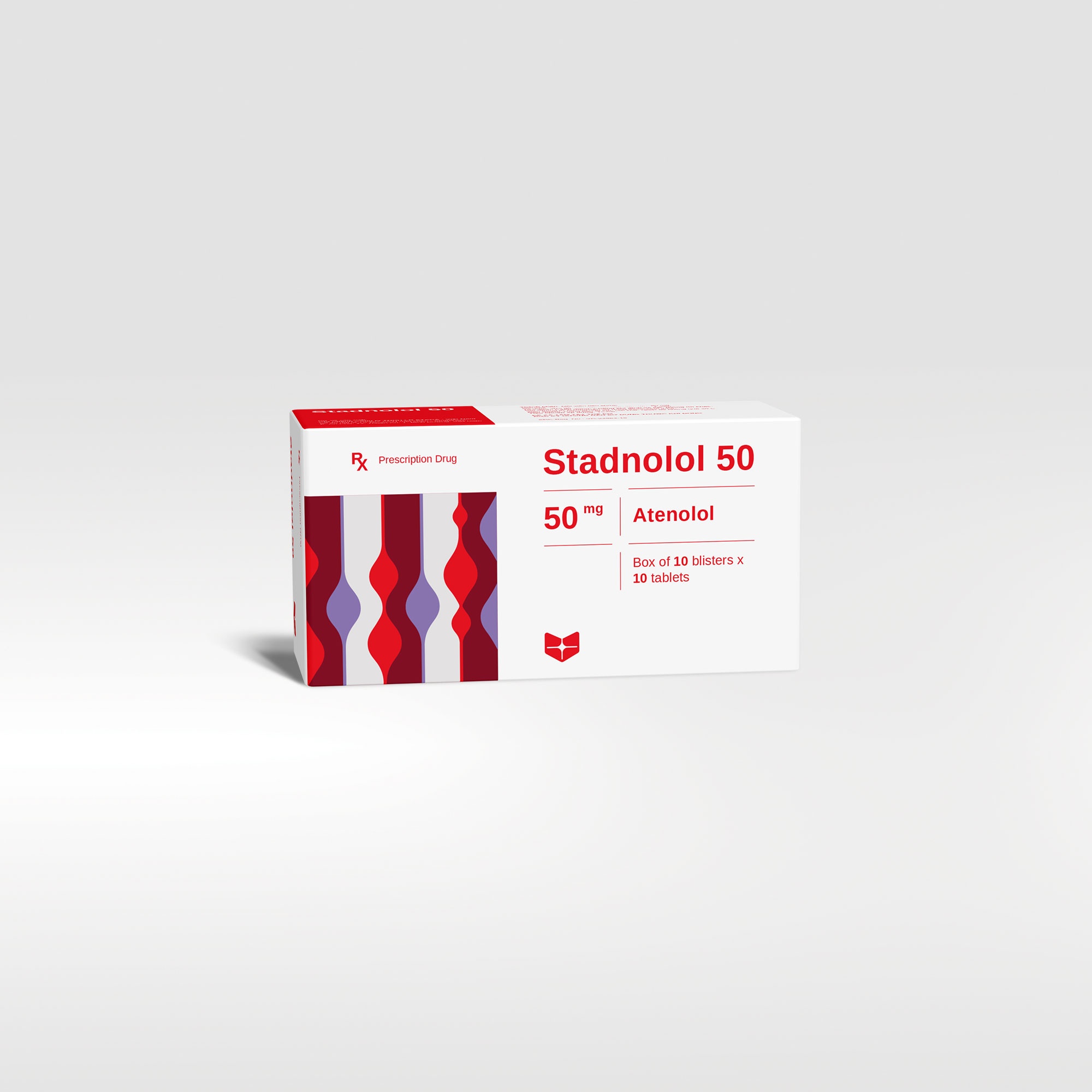Stadnolol 50 Rx
Atenolol is a hydrophilic beta-adrenergic receptor blocking agent with relative β1 selectivity (’cardioselectivity’) without intrinsic sympathomimetic and membrane stabilising activities.
| Pack size | Box of 100 tablets |
| Shelf-life | 60 months |
| Composition | Atenolol |
| Dosage forms and strengths | Tablet: 50 mg |
Product code :












